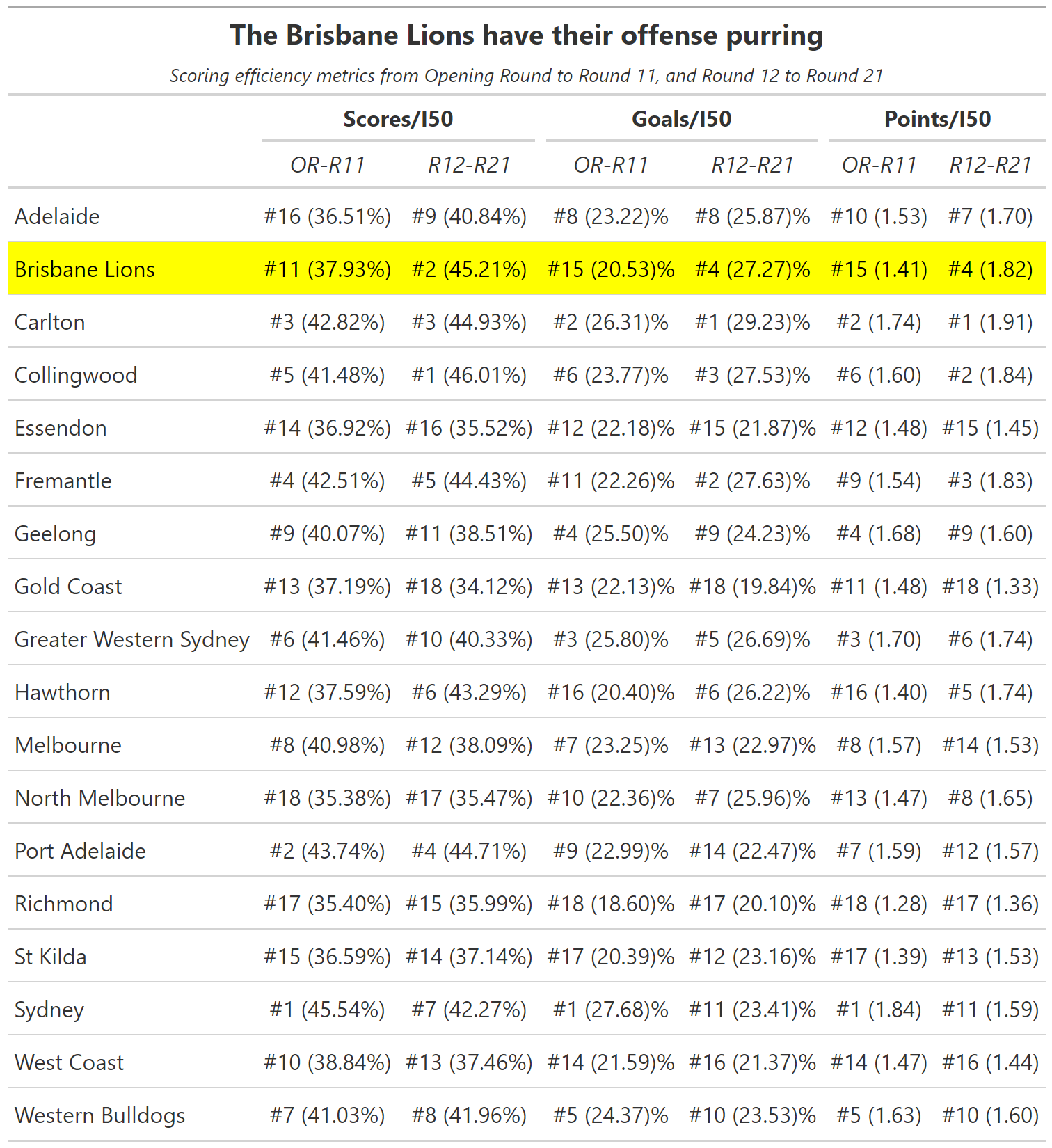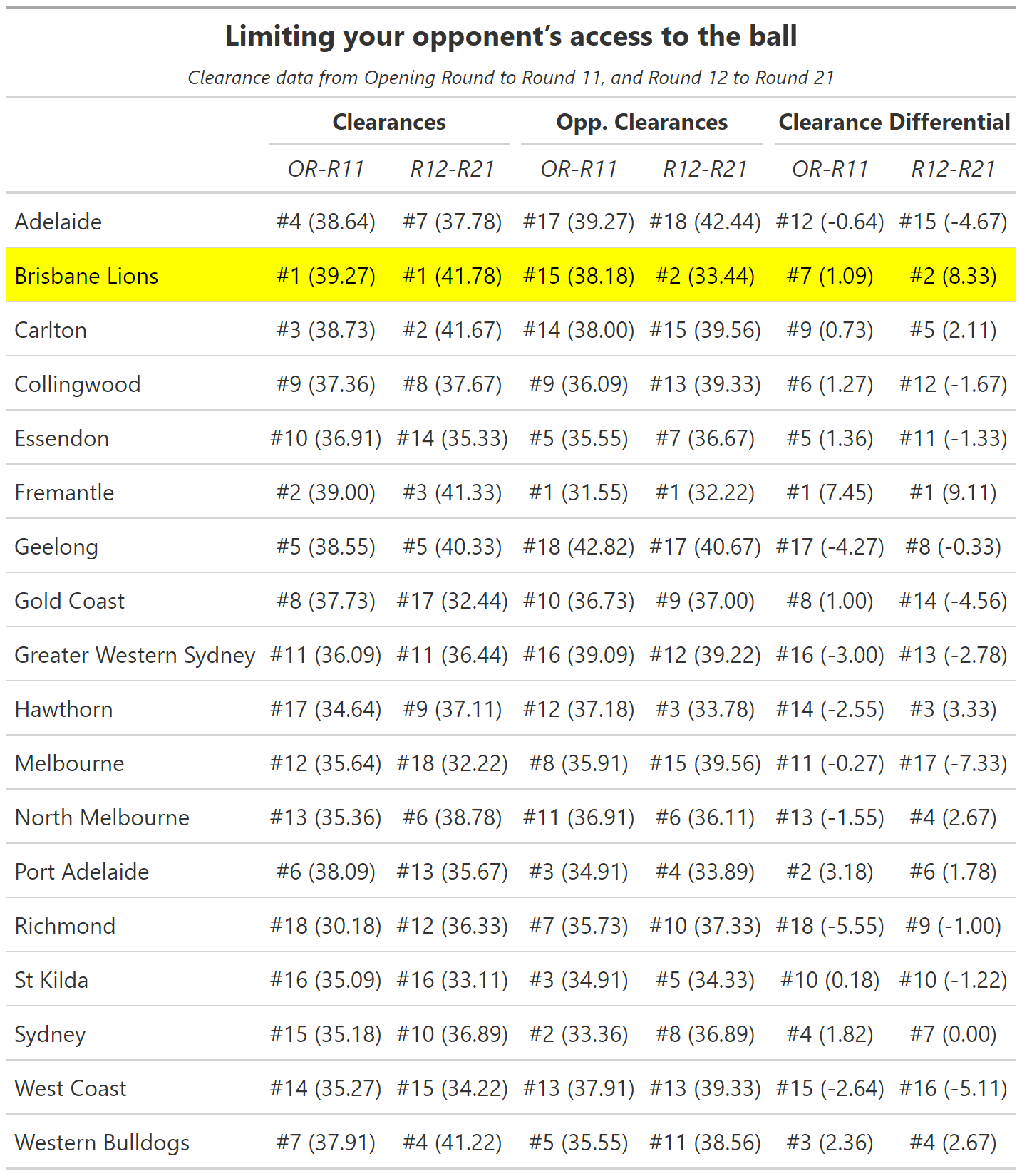Brisbane's Big Turnaround
The Lions have changed things up over the last nine weeks - but not necessarily in the way you would think.
Earlier this week CODE Sports ran a story looking at the numbers behind Brisbane’s improvement in form on the back of the Lions winning nine consecutive games and jumping from thirteenth to second on the ladder.
The story mainly focused on their much-improved defence, but it also highlighted some aspects from the offensive side of their game.
“Scoring inefficiency was the major flaw in their early season struggles, but that issue was rectified mid-year, with the familiar front-half turnover game and clearance dominance returning.”
“The shrewd addition of Stuart Dew to the part-time coaching ranks as a goalkicking mentor paid immediate dividends and the Lions have significantly bolstered their scoring output since the loss to Hawthorn in round 11.”
Let’s take a look to see if the data supports these statements.
First up is scoring efficiency. Potential measures of scoring efficiency include:
- The proportion of entries inside 50 that result in a scoring shot (a goal or behind¹);
- The number of goals per inside 50; and
- The number of points scored per inside 50.
The Lions have certainly improved their scoring efficiency in the weeks following their 25-point loss to Hawthorn in round 11.
Chris Fagan’s men have increased the number have seen increases in all three scoring efficiency metrics, jumping from being the eleventh-ranked team to the second ranked-team for scores per inside 50, and from fifteenth to fourth for both goals and total points scored per inside 50.

Next up are clearances.
While Brisbane’s clearance numbers haven’t changed dramatically since their bye (an average of 39.3 compared to 41.8, making them the number 1 ranked team in both periods), their clearance dominance has come from their ability to stop their opponents from taking the ball out of stoppages.
On average, the Lions allowed 38.1 clearances in the first part of the season and were the fifteenth ranked team in this category. But this figure has dropped to 33.4 from Round 13 onwards, which makes them the number 1 ranked team in this category for the second part of the season.
Consequently, their average clearance differential has increased from +1.1 (ranked seventh) to +8.3 (ranked first) between the two parts of the season.

I’m unable to look at front-half turnovers, as this data aren’t publicly available. Ditto for scores conceded from interceptions and clearances.
However, we can look at opposition scores per inside 50.
From rounds 13 to 17 the Lions were rated last for opposition scores per inside 50 (average of 44.9%) but have risen to tenth from round 18 onwards (improving to 39.6%).
The difference in ranking between my analysis and that reported in the CODE Sports story may be due to different definitions of the scores per inside 50 metric – but you can’t deny there hasn’t been improvement in this area from Brisbane.
¹Rushed behinds are excluded from the number of scoring shots. While a shot at goal can be punched over the line for a behind, defenders can also rush a behind if under sufficient pressure from an opposition player. Given there’s no way to tell how a behind was rushed, I figure it’s safer to exclude them.
The timeframe of this stat is limited based on what data are freely/easily available and/or accessible. Please don’t hesitate to contact me if you spot any errors in what I have presented.